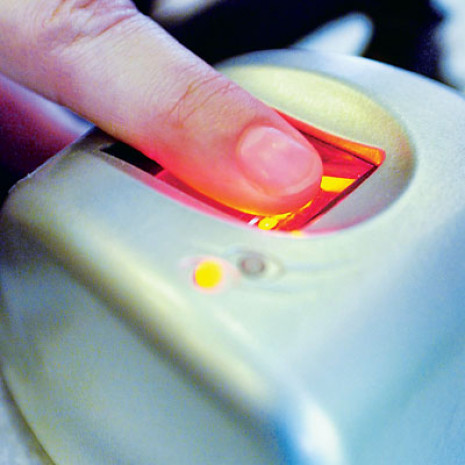Complex systems
Purely mechanical protective measures no longer meet the security requirements of a growing number of consumers. Consequently, the demand is increasingly for electronic systems or a combination of mechanical and electronic components.
This is apparent where locks and fittings are concerned as well. They are today far more than simply a means of connecting leaves or casements to their frames. They are increasingly developing into hi-tech products that have to reconcile a multitude of requirements.
Will biometric systems soon move into private households as well?
Purely mechanically activated fitting or security components will become even less significant in the future as the integration of electronic components, i.e. the mechatronic route, is followed. At the same time, so-called keyless techniques such as chip or magnetic cards, facial recognition or iris scanning will provide still more convenient ways of operating doors. These electronic components are already an essential feature of the commercial area, and the trend will move over to the private sector as well.
Stainless steel in demand
Mechanical products are following the trend towards an expanded spectrum of applications, towards modularity and greater functionality – for instance, in the area of locks and multiple locking devices. The proportion of systems that have electronic booster or add-on modules has been on the increase for years already. The industry has on tap an appropriate programme of anti-burglar products for doors and windows, which increasingly offers such aspects as simplicity of installation, easy upgrading and a degree of convenience tailored to the needs of the market.
Electronic security systems are playing an increasingly important role.
In the case of locks and fittings, however, it is not only the security and functional qualities that count: their physical appearance has for a number of years become increasingly important…






